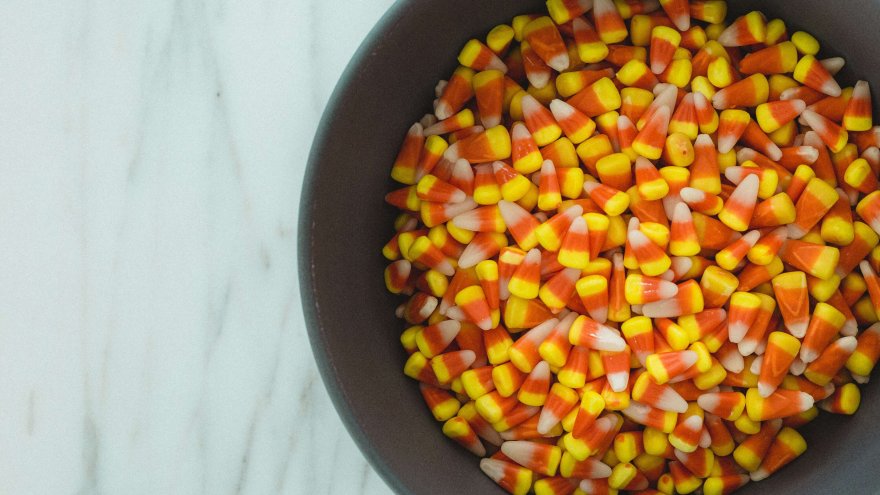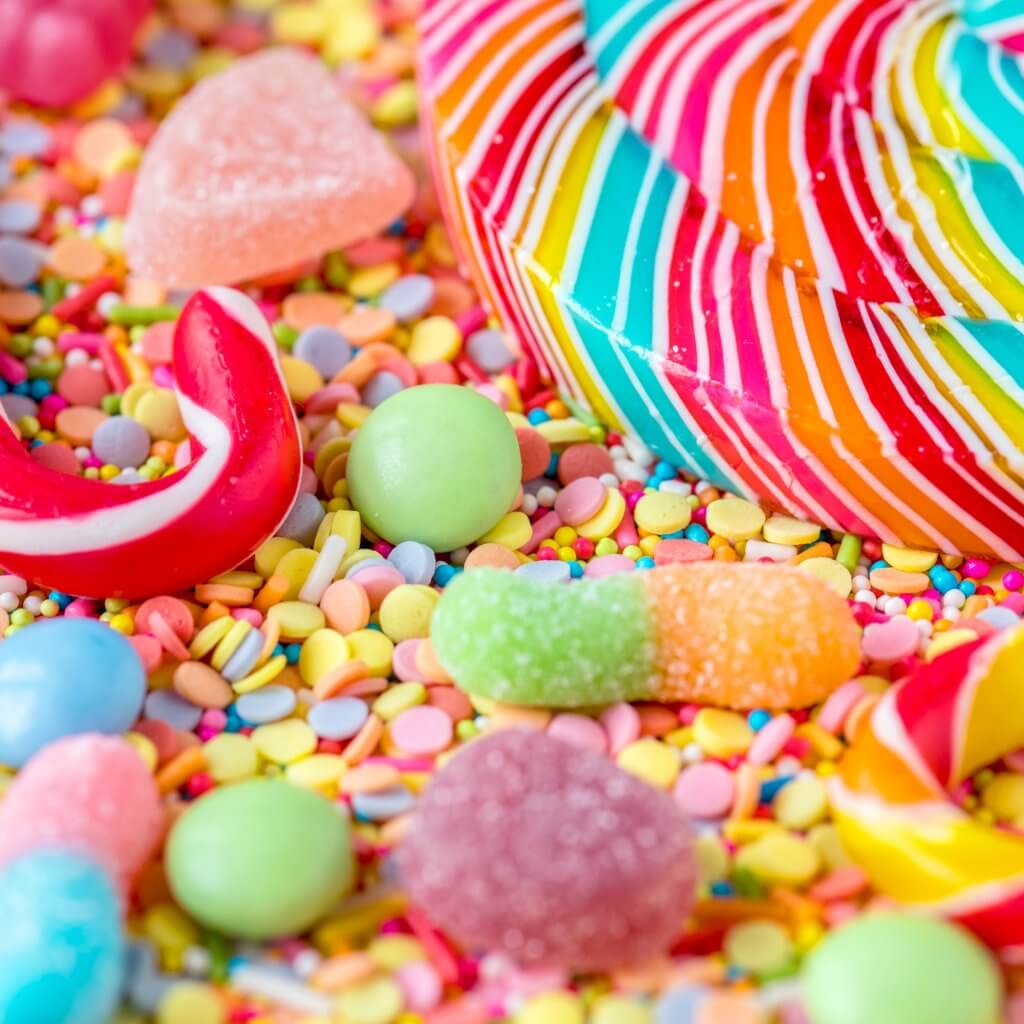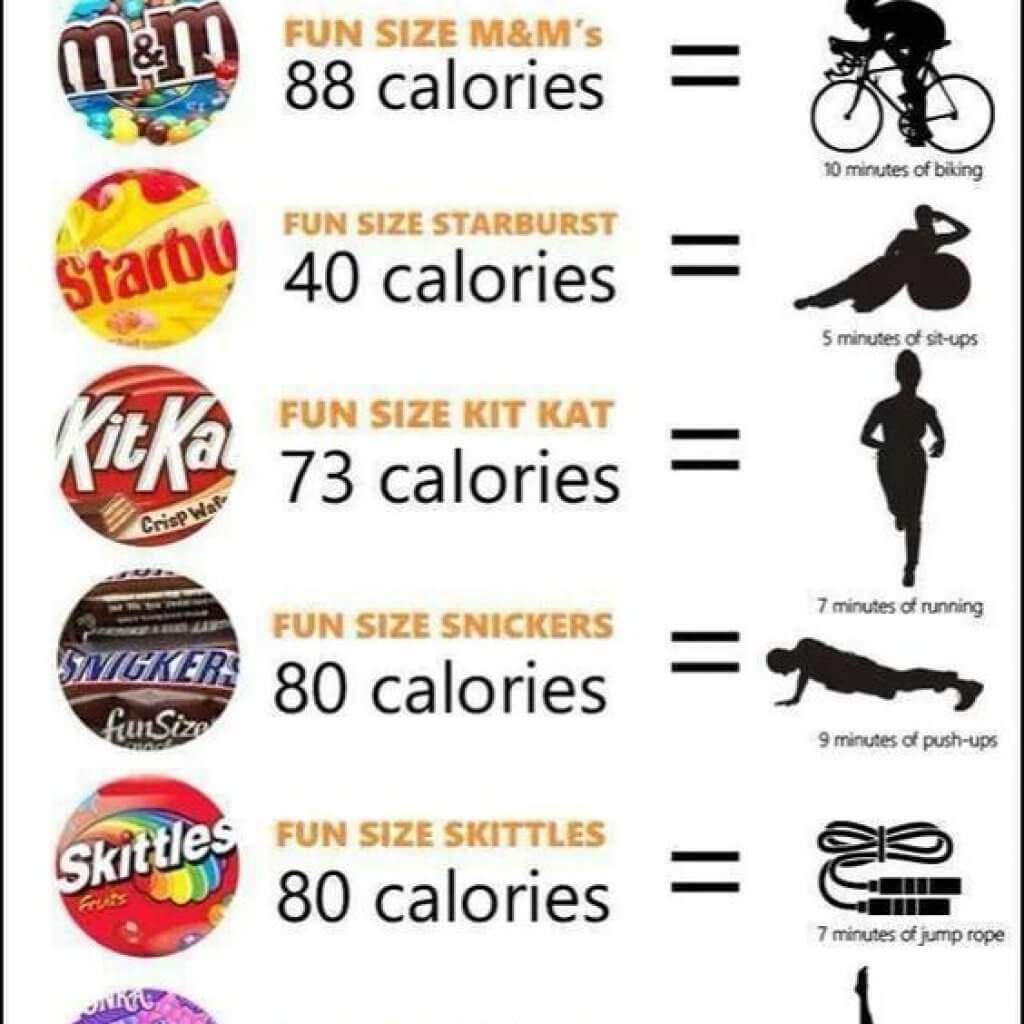Trick Or Treat: What to Know About Candy & Running

“I just ran 6 miles. I deserve this candy bar.”
This is something many of us food loving runners tend to tell ourselves. And while there is nothing wrong with a little treat ‘yo self-mentality from time to time—especially after crossing that marathon finish line—we all know that candy isn’t the best thing for us. Then again, unless you are a long distance runner. There are many runners who prefer chewing on some candies instead of slurping down GU on race day. Is this a trick or a treat when it comes to performance? Is eating candy and running a good idea?
No one wants to bonk and hit the wall when running. And what works for some runners doesn’t for others. While some carry energy gels or chews with them, others carry M&Ms and other candy suckers. There are even some races that give out candy at aid stations.
Here’s what you need to know about eating candy and running.

Running On Sugar
The body uses carbohydrates as fuel during a run. (The body breaks down the carbs to sugar for fuel.) It is recommended that runners consume 30 to 60 grams of carbohydrates per hour when running 60 minutes or longer. This is the equivalent to 17 Haribo Gummy Bears.
Put simply, runners can absolutely use candy as a fuel source during a run since they are replenishing their sugar sources. Many prefer it to GU that might hurt their stomach or they might actually want the chewing sensation or to have the candy melt in their mouth.
However, the benefits of sports nutrition like GU is that they also contain electrolytes, sodium, and potassium that is needed that candy does not. Then again all that is needed is an electrolyte drink and munching on the candy won’t hurt performance at all.
But keep in mind that candy isn’t needed for runs less than an hour. Running with candy is better suited for marathons and ultramarathons when sugar is absolutely needed. There are even races that hand out candy at aid stations because many runners have success when it comes to their performance and keeping their endurance up since their glycogen sources are replaced quickly. It’s like the sugar goes right to the brain to wake them up and then into the muscles to keep them going.
However, keep in mind that it might affect digestion issues depending on if the runner has a sensitive stomach or not. That is because candy also contains other ingredients. Not to mention the digestive system slows down during running, so actually eating candy might be the last thing the runner wants to do.
Best Candy For Runs
To avoid digestion issues stuck to candy that is free from fiber and fat. This includes options like Jelly Beans, Smarties, Gummy Bears, Sour Patch Kids, or Jolly Ranchers. PEEPS is another great option since it contains straight up sugar, but no fat or fiber.
M&Ms and Twizzlers are other options, whereas others make their own trail mix with candies and nuts. American ultra-runner Jax Mariash Koudele is a fan of Swedish Fish and Starbursts, and Pay-Day candy bars.
Candy that is also vegan include Airheads, Swedish Fish, Sour Patch Kids, Laffy Taffy, Smarties and Nerds.

Candy Conversation
So how much candy does a runner need to eat to replenish their glycogen sources?
Remember, it’s 60 grams of carbs per hour. Here is the breakdown:
- 17 Haribo Gummy Bears
- 24 Flipz Chocolate Covered Pretzels (which also has salt and fat)
- 1 3/4 pack of M&Ms
- 6 rolls of Smarties
- 37 Jelly Belly Jelly Beans
Running Off The Candy Calorie Calculator

Thinking about candy and running opened a can of worms for us. The questions kept rolling in as if we were stuck inside Willy Wonka’s Chocolate Factory. But before we start screaming, “I want it now,” we should take into consideration the high calorie and sugar count in candy.
It might not be a good idea to eat that Snickers bar and then go for a run or save some of it during the run.
After eating a Snickers or other full-size chocolate candy bar, a person needs to walk 2.75 miles assuming they cover a mile in 2,000 steps. Burning off a full-size chocolate bar is also the equivalent to 21 minutes of a cardio workout for men and 25 minutes for women.
Running a 10-minute mile pace for seven minutes burns off one Reese’s Peanut Butter Cup that has 110 calories (based on a 130-pound female).
It takes about 7 minutes of running to burn off a fun size Kit Kat that is 73 carols )for a 150-pound female).
According to Dr. Charles Platkin, a researcher at the Hunter College School of Urban Public Health and the City University of New York School of Public Health in New York City, it takes 13 minutes to run off the 60 calories in a Charms Blow Pop or Tootsie Pop.
Keep in mind the number of calories burned depends on gender, age, and weight, as well as running speed. It takes about 21 minutes for someone who weighs 155 pounds to burn off 372 calories at 6 mph. This is more than the number of calories of a standard size Snickers bar.
Sources
- , 17 Surprising Mid-Run Snacks to Improve Your Marathon, News Website
- , 7 weird things ultra-runners eat during a race, Company Blog
- , Can Candy Be A Lifesaver On Long Runs?, Running Website
- , Will Eating Candy Help You Run a Marathon?, Health Website
- , Halloween Treats Calorie Calculator, Health Website
- , How Long It Takes to Burn Off Your Favorite Fun-Size Treat, Health Website
- , How long does it take to burn off YOUR favourite junk food? Infographic reveals a chocolate fudge cake needs two hours of cardio (but a Big Mac takes just 51 minutes), News Website
- , How Much Running Does It Take to Lose One Snickers Bar?, Lifestyle Blog
- , Halloween Candies That Are Sneakily Vegan, Running Website
Latest Articles
 Is Running on a Treadmill Easier Than Running Outside?Runners have their own preferences, whether it is treadmill running, running outside on the road, or exploring trails. So...
Is Running on a Treadmill Easier Than Running Outside?Runners have their own preferences, whether it is treadmill running, running outside on the road, or exploring trails. So... Is It OK to Use Trail Running Shoes on the Road?While trail running shoes can be used on roads, especially in situations where a runner encounters mixed terrains or pref...
Is It OK to Use Trail Running Shoes on the Road?While trail running shoes can be used on roads, especially in situations where a runner encounters mixed terrains or pref... How to Fix Sore Quads After Running?Rest, ice, gentle stretching, and over-the-counter pain relievers can help soothe sore quads after running. Also, ensure ...
How to Fix Sore Quads After Running?Rest, ice, gentle stretching, and over-the-counter pain relievers can help soothe sore quads after running. Also, ensure ... 10 Fruits With The Most Electrolytes to Replace Sports DrinksThese fruits are high in electrolytes such as potassium, magnesium, and calcium, essential for hydration, muscle function...
10 Fruits With The Most Electrolytes to Replace Sports DrinksThese fruits are high in electrolytes such as potassium, magnesium, and calcium, essential for hydration, muscle function...

